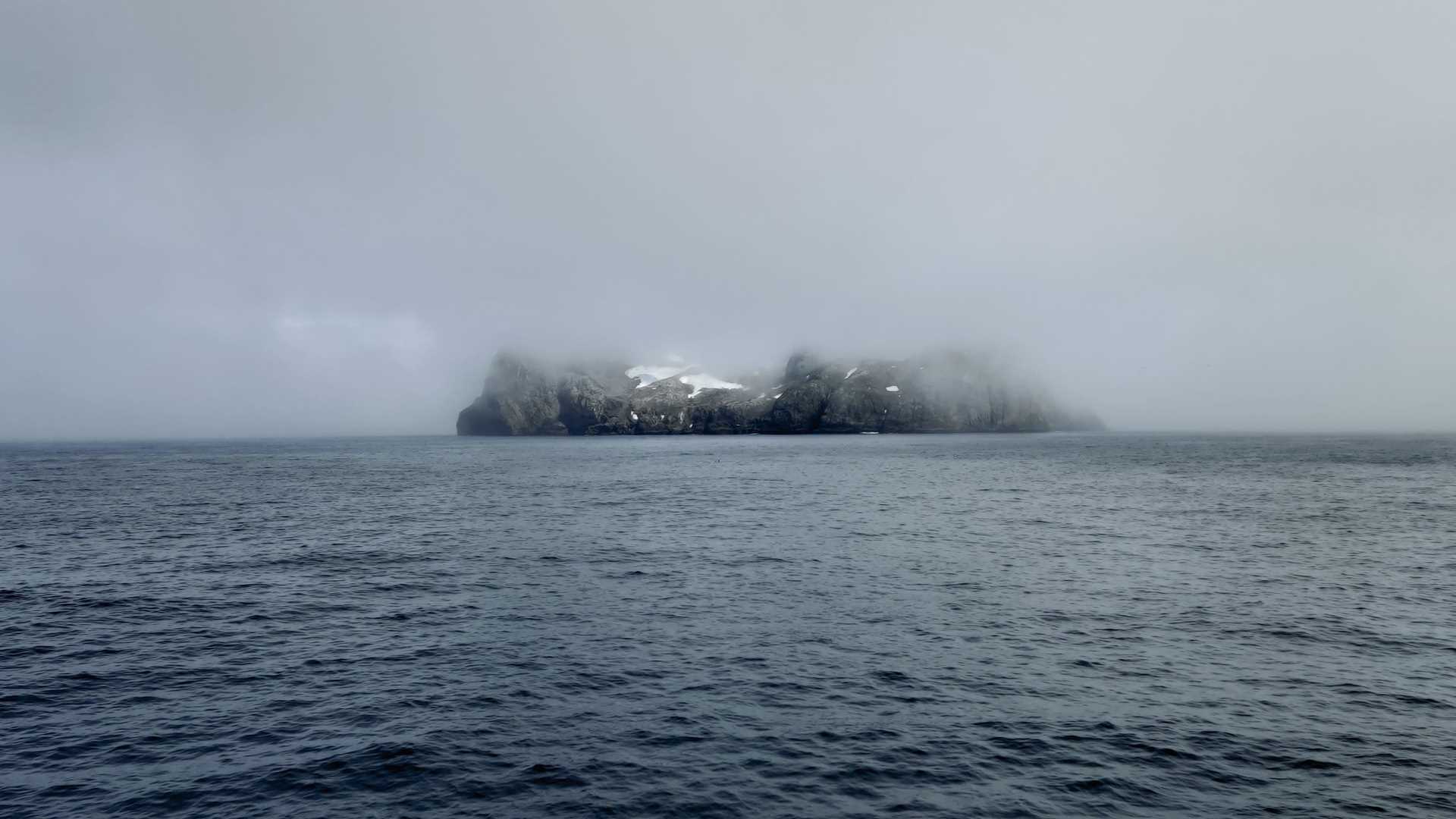We enjoyed a delightful morning in the southern reaches of the infamous Drake Passage with beautiful sailing conditions. We found ourselves accompanied by wandering and black-browed albatrosses, northern and southern giant petrels, pintado petrels, Wilson’s storm petrels, and several prions that were particularly difficult to identify on the wing. As we approached the South Shetland Archipelago, we suddenly found ourselves surrounded by humpback whales and chinstrap penguins splashing and cavorting all around the ship. This was pretty exciting, and most everyone was quickly out on deck. We encountered foggy conditions about this time and soon entered the treacherous English Strait, threading our way through fog-shrouded volcanic islands as National Geographic Orion sailed south toward Barrientos Island, which is part of the Aitcho Group. “Aitcho” is the commonly accepted name derived from the phonetic spelling of “HO,” which signifies Hydrographic Office – a department of the British Antarctic Survey (ne. Falkland Islands Dependency Survey) that originally oversaw this vicinity.
Soon after lunch, we were all headed ashore to what for many was the sixth if not seventh continent reached in travel (we polled almost everyone as they arrived ashore). We landed on the north side of the island, near the eastern end, but eventually walked over a saddle down onto the south coast, where we were later picked up by our Zodiacs, after the ship had shifted to a new southerly position. Our visit ashore was truly remarkable with windless and dry conditions as we wandered about, viewing both chinstrap and gentoo penguin colonies. This year’s chicks were far along in their development across both species, and it was fun and interesting to watch the interplay between adults and their young. In fact, many of the chicks had already outgrown their nests and had begun to crèche up while their parents were offshore searching for food. As soon as an adult returned to one of the various colonies, youngsters swarmed toward, hoping that it was one of their parents coming home to feed them.
Barrientos Island is a relatively small one, which is why it has not developed a significant ice cap over the years. The snow tends to melt or get blown off in the Summer. Some of the exposed geological aspects of the island are quite impressive, especially one particular horizontal tubular flow of ancient basalt that has formed curved columnar structures facing straight out of the steep mountainous rock. The lack of a permanent ice cap has created an environment conducive to penguin nesting, so for a first stop, this was a nearly perfect site. In addition to the appealing penguins, we encountered a pair of fur seals near the landing site and found a number of elephant seals at the far end of the south coastline piled together for their annual molt. The protected bay on the south side of the island was used as a whaling station in the early 20th century, when ships would arrive in the summer to set up processing sites to flense whales for their oil. This was an extremely wasteful technique, especially since the carcasses (minus their blubber) were simply cast off to decompose in the surrounding waters. Many of their bones have washed up onto the shore, and some of them are even being used as nesting backdrops by gentoo penguins.
As we sailed away in the early evening, the light was beautiful on the ice-covered Shetland Islands. After dinner, our beloved ship passed close to a very impressive disintegrating tabular berg. As we circled around it, we were surprised to find a large congregation of several hundred Adelie penguins standing closely packed on an ice shelf extending outward on the back side.







